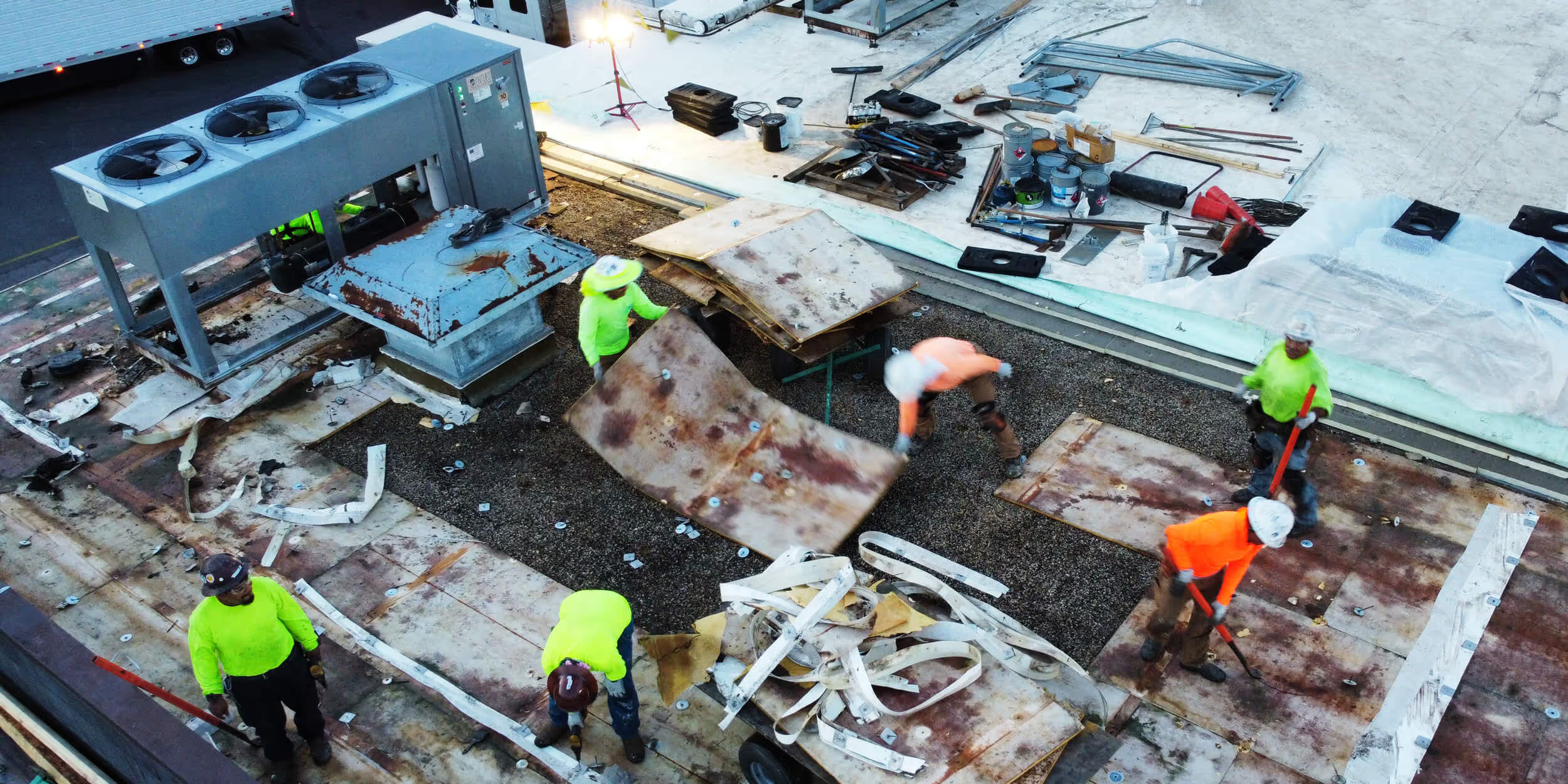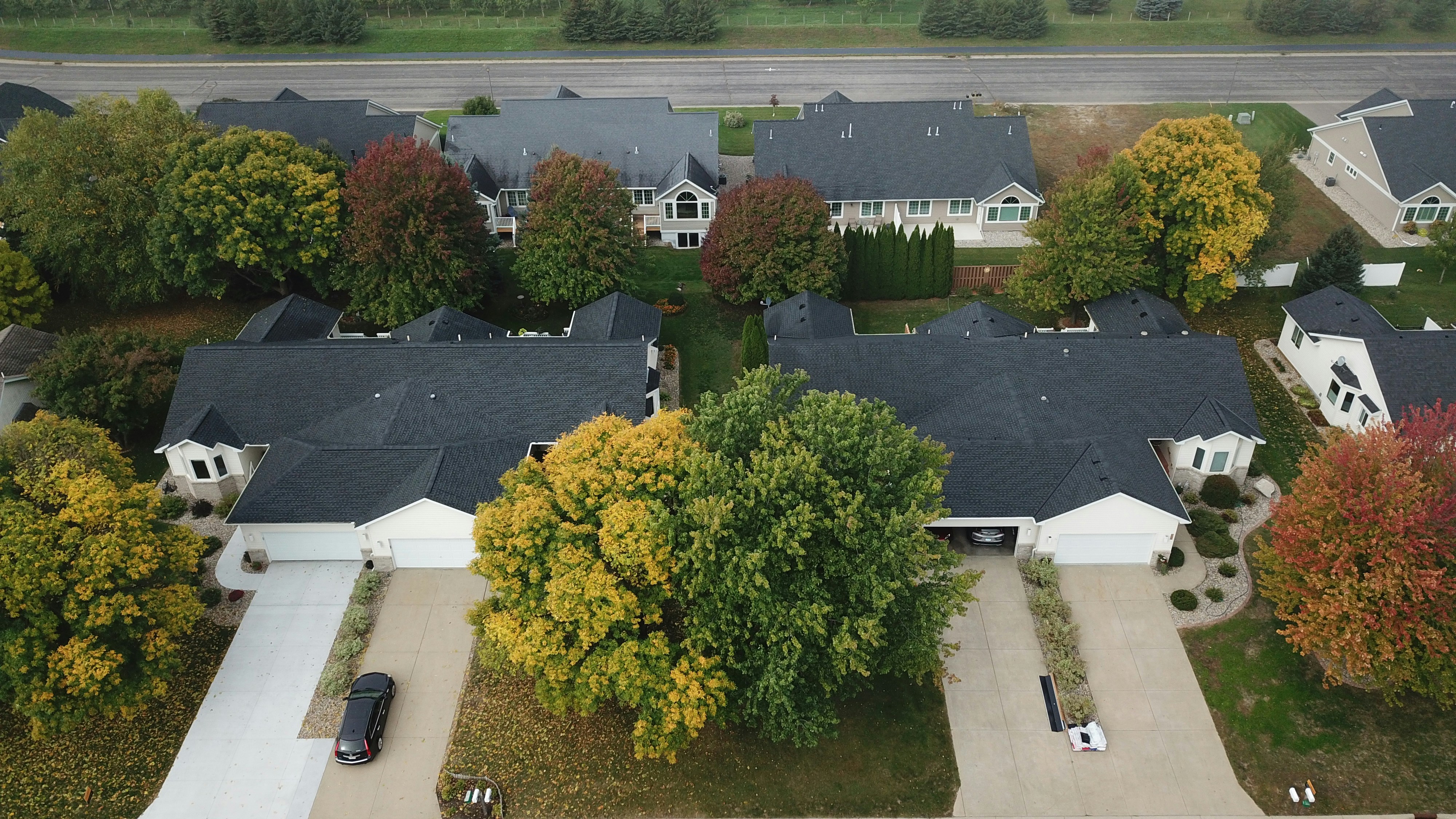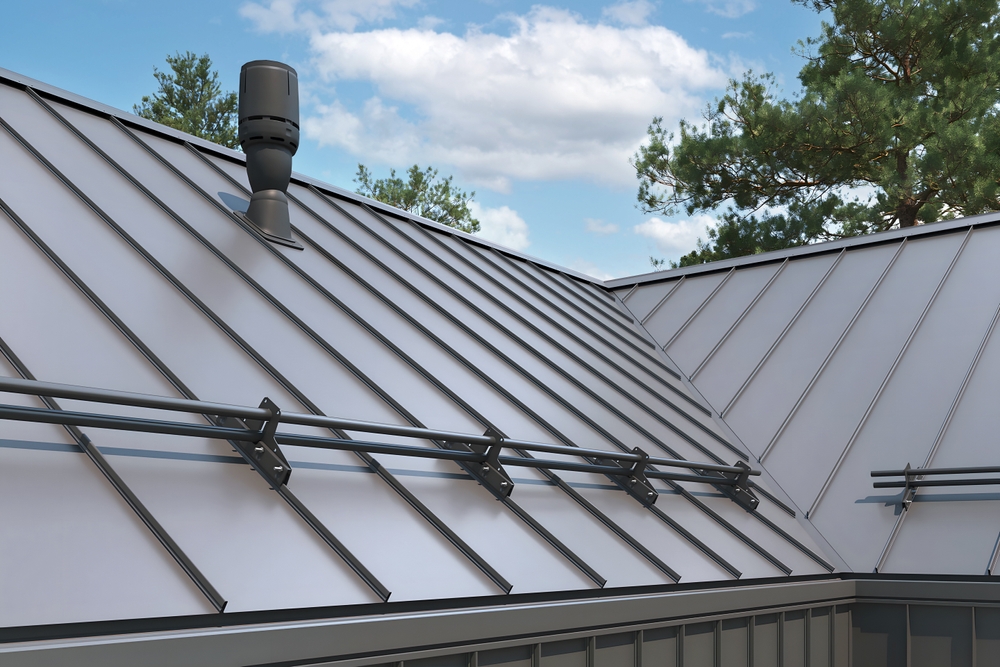Avoid These Common Roofing Mistakes in Large-Scale Construction Projects

In large commercial construction, a lot of attention goes to what people see: the façade, the interior finishes, the structural systems. But ask anyone who's had to troubleshoot leaks on a new building, and they'll tell you—the roof can make or break the whole project.
Few parts of a building carry more risk for future problems than the roof. If the wrong decisions get made during design or installation, it won’t just impact warranties and maintenance. It could trigger water damage, disrupt operations, or even invite liability long after the job’s signed off.
And yet, in project after project, we see the same roofing mistakes happen. The good news? Almost every one of them is preventable—if you bring roofing expertise to the table early and make a few key decisions up front.
At Reliance Roofing, we’ve been partnering with general contractors, architects, and facility teams on complex builds across the Mid-Atlantic for years. Here’s what we’ve learned about the most common roofing mistakes in large-scale construction—and how to avoid them before they cost you time, money, or credibility.
Mistake #1: Waiting Too Long to Bring in a Roofing Specialist
One of the biggest issues we see? Roofing gets treated like a box to check late in the process. By the time a roofing contractor is called in, the plans are already finalized. Structural loads have been calculated, penetrations have been set, drainage is locked in.
At that point, it’s too late to flag a lot of issues without triggering redesigns or costly change orders.
We once worked on a project where mechanical equipment was clustered so close together on the roof that there wasn’t enough room for safe walkways—or even for proper drainage slopes. Nobody had flagged it earlier, because the roofing contractor wasn’t looped in during the design phase. Fixing it meant going back to engineering, delaying the schedule, and spending thousands that could have been avoided with an early consultation.
Roofing needs to be part of the conversation from day one. Whether it’s ensuring the deck is properly sloped, coordinating penetrations, or aligning structural supports, roofing details touch multiple disciplines. At Reliance Roofing, we’re used to sitting at the table during pre-construction meetings—not just showing up with a bid after the fact.
Learn more about our New Construction Roofing services
Mistake #2: Picking the Wrong Roofing System for the Building
Here’s a simple truth: not every roofing system works for every building. But too often, the selection gets driven by budget alone—or by sticking to what’s been spec’d on previous jobs—rather than evaluating what’s really best for the specific structure and use.
We’ve seen buildings with flat roofs that weren’t suited for the specified material, leading to pooling water and early membrane failure. Or designs that called for heavy rooftop equipment without accounting for the reinforcement needed in the roofing system underneath.
Here’s a quick breakdown of where different systems tend to shine:
- TPO and PVC: Excellent for flat roofs where energy efficiency is a goal. These reflective membranes help reduce heat gain and can lower cooling costs.
- Metal roofing: Ideal for sloped or long-span structures. Offers longevity, durability, and a clean architectural look.
- EPDM: A solid, budget-friendly choice for flat roofs where cost control is key and reflectivity isn’t a primary concern.
There’s no universal “best” roof—it depends on the building’s needs, exposure, occupancy, and long-term goals. Our role is to help clients weigh those factors and avoid costly mismatches between design intent and roofing performance.
Explore our roofing systems: TPO | PVC | EPDM | Metal Roofing
Mistake #3: Forgetting About Future Maintenance
It’s easy to get tunnel vision during construction. Everyone’s focused on getting the building dried in, passing inspections, and hitting milestones. But what happens five or ten years down the line, when it’s time to service rooftop equipment or inspect flashing?
We’ve been called to inspect roofs where access was practically impossible. No ladders, no clear pathways, mechanical units jammed so close together that no one could safely navigate around them. Those design decisions didn’t just make inspections harder—they increased the chances that small issues would go unnoticed until they turned into big problems.
A well-designed roof isn’t just watertight on day one. It needs to stay inspectable, serviceable, and maintainable for decades.
At Reliance Roofing, we build maintenance considerations into every design review. We flag access points, recommend adding walk pads, check drainage layouts, and make sure serviceability won’t be an afterthought. It’s a little attention up front that pays off for the facility team in the long haul.
Learn more about our Roof Maintenance services
Mistake #4: Separating Roofing and Waterproofing Scopes
Here’s a sneaky problem that shows up more often than you’d think: roofing and waterproofing getting treated as two separate scopes, handled by two separate trades, without enough coordination between them.
The result? Vulnerable transition points where water finds its way in. We’ve seen it at parapet walls, terminations, tie-ins to exterior cladding—places where the roofing system is supposed to overlap with other waterproofing details, but doesn’t.
Water doesn’t care which subcontractor was responsible for which piece. It just follows the path of least resistance.
That’s why we always advocate for integrating roofing and waterproofing decisions as early as possible. Whether we’re self-performing both scopes or collaborating closely with the waterproofing team, we prioritize coordination to close those gaps.
See how we integrate roofing and waterproofing
Mistake #5: Assuming Any Crew Can Handle the Install
It’s tempting to think roofing is “just” another part of the build—something a generic subcontractor can knock out. But the reality is, poor installation is one of the leading causes of roofing failure. And once that membrane is covered up, it’s not easy (or cheap) to uncover and fix mistakes.
We’ve been brought in to repair roofs that failed years ahead of schedule, not because of bad materials, but because details like seams, terminations, and flashing were rushed or sloppily done.
At Reliance Roofing, we believe skilled labor matters. We use certified crews, provide hands-on supervision, and follow documented QA/QC checklists throughout the install. That oversight protects both the building owner and the GC from future warranty disputes or callbacks.
Mistake #6: Not Syncing Roofing with Overall Construction Phasing
Roofing doesn’t exist in a vacuum—it’s part of the critical path. If you install it too early, you risk damage from other trades working above or around it. Too late, and you could delay the project’s completion.
We’ve seen schedules where the roof was rushed to beat weather windows, only to be punctured by later mechanical installs. Or projects where delayed roofing meant interior finishes couldn’t start on time because the building couldn’t be dried in.
A good roofing partner knows how to align with the broader construction sequence, flag risks, and coordinate timing to keep everything moving. That’s been our approach on complex builds across DC, Maryland, Virginia, and the Mid-Atlantic.
Roofing Done Right Means Fewer Surprises Later
At the end of the day, avoiding these mistakes isn’t about spending more—it’s about spending smarter. It’s about collaboration, asking the right questions early, and working with a team that sees the whole picture.
When you partner with Reliance Roofing, you’re not just hiring an installer. You’re bringing on a proactive problem-solver who’s invested in your project’s success, from pre-construction through final inspection—and well beyond.
Planning a commercial build? Let’s talk through your roofing needs and review your specs together. We’d rather help you avoid problems now than get called to fix them later.
Contact us today to set up a consultation.
Proudly serving the Mid-Atlantic
We’ve helped deliver durable, high-performing roofs across DC, Maryland, Virginia, and the broader Mid-Atlantic region, supporting everything from schools and hospitals to office campuses and industrial facilities.



